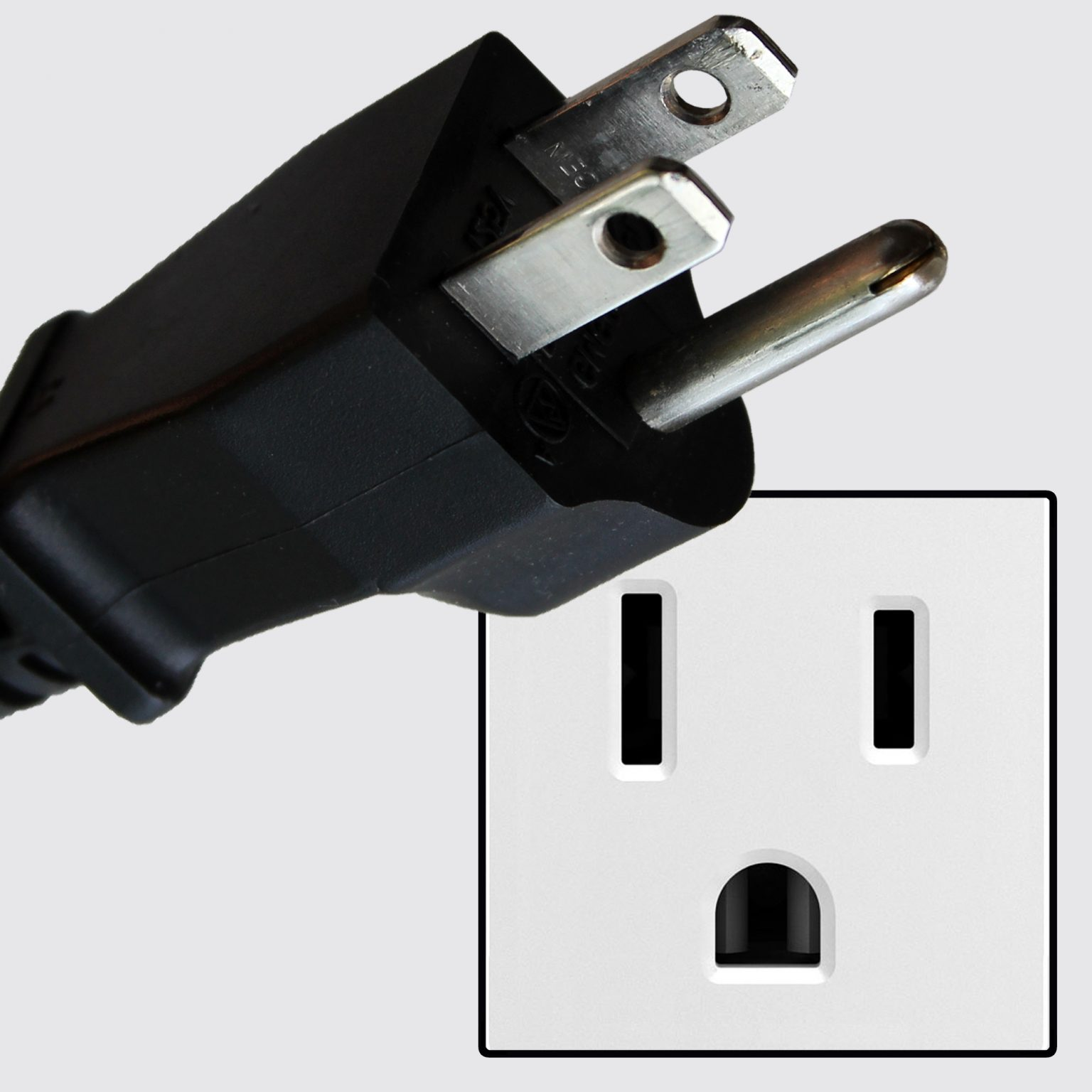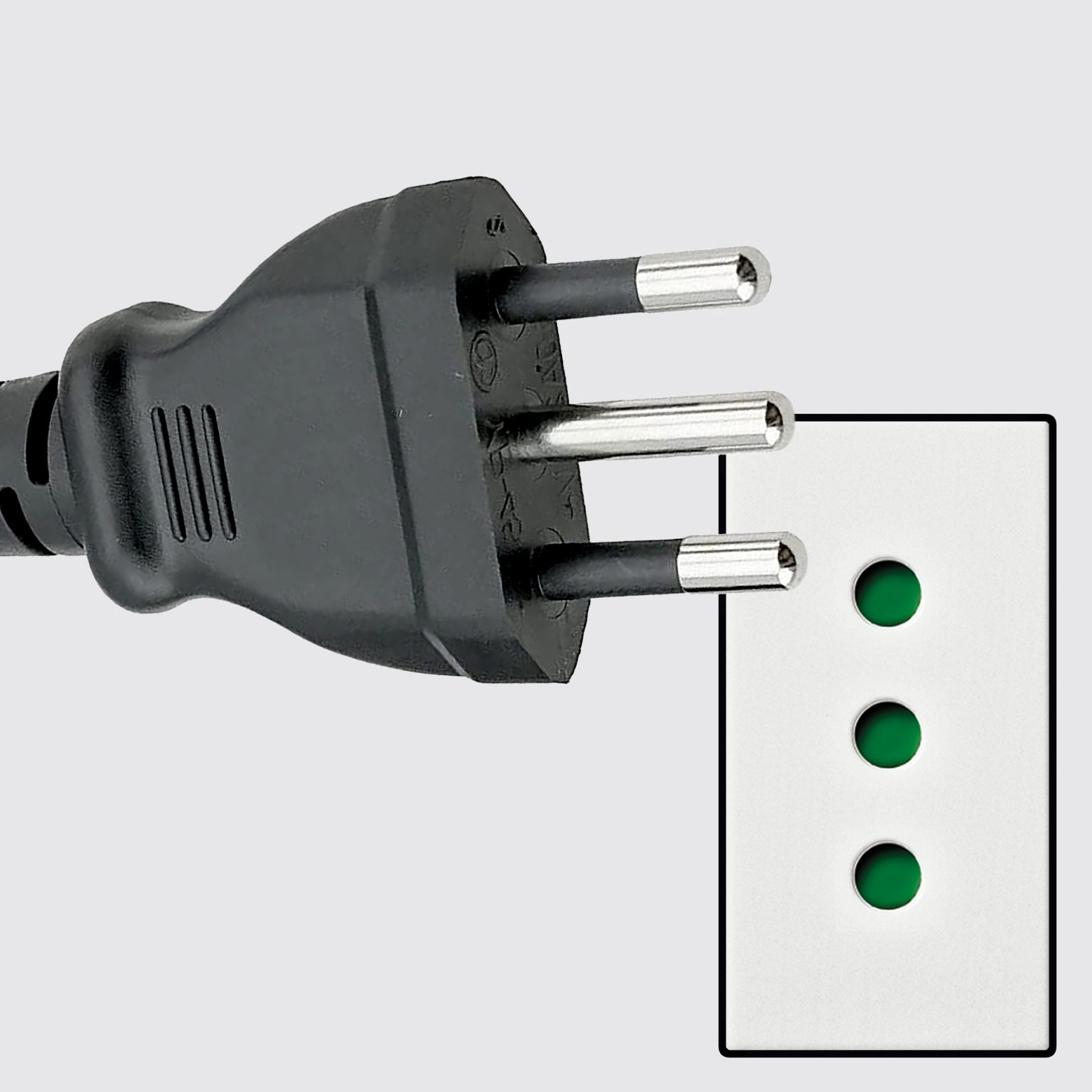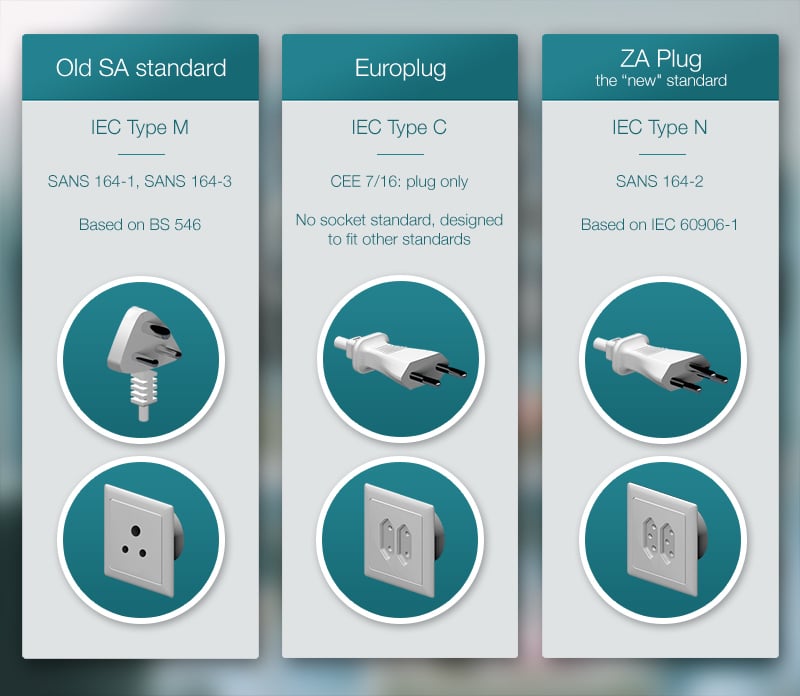They’re like that in this apartment we’re renting and I keep seeing them elsewhere. I don’t get it.
I like the integration of the switch, should be standard. I use many switch plug-ins just to avoid stand-by consumption (it really adds up over the year) and to avoid high pitch humming on some devices.
YSK: there’s also remote controls for these switches, very handy

I’m not an electrician, but wouldn’t remote control imply that something still remains on standby? So that it can receive a wake-up signal, if nothing else.
Indeed so but the power draw is very miniscule.
All plug points in India also have (regular sized, not these tiny ones) switches to control them
Huh, it’s interesting- Here the power switches are a similar size to the UK, so when I searched up a picture of the Indian switches I thought they were ridiculously giant, not like regular sized UK/Australian ones
I guess it’s just whatever you’re used to is the ‘regular’.
Are light switches the same? What happens when you have a lot of switches together, like six or eight? Do you just have really wide banks of switches?
also small child/baby protection.
But who will protect the big babies?
How does the switch protect children?
if it is a small child it is assumed that the joint probability of both turning on the switch and inserting a fork through the holes is roughly the product of probabilities of each (therefore lower than each individually), i.e both events are independent.
Have you tried to stick anything metal into one of these plugs? It is fairly todler proof. I think a 7 year old has the dexterity to defeat it but certainly not a baby.
Manufacturers sell the wall sockets in both switched and unswitched versions so I would say the switch is just there for convenience of the user.
It seems that maybe in the 60s having a switch on the wall was very useful because most electrical devices would have been designed to be switched on or off from its mains power connection (like lamps, hairdryers, vacuum cleaners, electric whisk, etc). I assume the standard was to have a switch as this gave a little extra functionality. Today however many electrical devices have digital electronics that don’t expect to be power cycled and so a switch is not really a feature but an inconvenience (think smart bulb, or Apple TV).
Have you tried to stick anything metal into one of these plugs?
No, hold on a second, let me try and come back.
Joking aside, I agree something like what you explained was probably the original reason. But I have seen some parents praising the switch mechanism for this reason as well but perhaps because they are more used to old European type plugs which does not have the internal security feature of UK plugs
Agreed, most people I have asked also think the switch is an additional safety feature. I can see that it is helpful to isolate a device and so can make using all manner of devices safer, but it requires that you know what the switch does and when and why you would switch it so this kind of excludes babies and toddlers.
My wife is from North America and common knowledge there is that wall sockets are just incredibly dangerous at all times. The UK style plug is quite different.
Children love playing with the switch, so I’m not sure how that’s supposed to protect them.
deleted by creator
Allows you to remove power from the plugged in device without unplugging it. This provides convenience to easily and quickly turn things on and off and prevents arcing when unplugging.
That’s exactly what I do, because it’s more convenient than unplugging everything.
I live in South Africa, where we had rolling blackouts (called loadshedding) for a few years. It’s easier to switch everything back on when the power comes back than to plug it back into a socket without a switch, especially with my fucked up spine.
The electricity in the place I live was done poorly, so having something plugged in “live” risks a surge or something and then the appliance gets fucked and then everything smells like burnt plastic.
And that’s the best case scenario. Others have had housefires.
Also, the South African plugs aren’t pleasant accidentally to step on. It won’t pierce your foot, but it can still hurt like a motherfucker for a few seconds if you step on it in the wrong way.
Those UK plugs do look a lot more nasty to step on. I shudder at the thought.
I like the EU and US two prong cables ( 🔌?) where the prongs are parallel to the cable, but not the cables with the orthogonal prongs.
I like the EU and US two prong cables ( 🔌?) where the prongs are parallel to the cable, but not the cables with the orthogonal prongs.
Non-grounded plugs aren’t that great, though, and once you add the third prong the plug gets much less flat. Compare:


Maybe Italy and Chile have the best idea in terms of slim grounded plugs, although the lack of polarity might be a problem?

Also, IMO right-angle plugs are often better than straight ones because you can put furniture closer up against them and do so without stressing the cable.
right-angle plugs are often better than straight ones because you can put furniture closer up against them and do so without stressing the cable.
Yeah that is definitely a huge bonus. I’ve taken it for granted.
We’re slowly adopting three pronged Italian/Chilean-type plugs that will be “backwards-compatible” with the EU plugs. I have no clue about polarity or anything like that.

New sockets include em. The original three pronged socket is kind of a hazard. Kids can stick their fingers in there. Not sure how that got approved.
Wait until you step on with bare feet an upturned UK plug. Worse than stepping on Lego
why would the lack of polarity be a problem? the outlets only deliver AC, and everything plugged into them are made for AC.
I gotta admit I don’t entirely understand it either, but people claim it matters. ¯\_ (ツ)_/¯
https://www.physicsforums.com/threads/why-is-the-correct-polarity-important-with-ac.979324/
How many devices do you have that don’t have a switch on the device itself?
exciting to stand on
Thanks, I hate it.
Makes sense, American lie voltage (outlets) are 120V. 240V is considered high voltage and isn’t typically fed into residential units. Plugging anything rated for 120V into a 240V outlet is gonna be a bad time, and is why the outlets for high voltage are shaped differently.
I was gonna guess that the switches were too negate so-called vampire power, which is when a truck’s of electricity flows into appliances that are normally off. IMO that trickle is so negligible in a residence that is 6 effectively irrelevant, but that’s just here in the US. I don’t know anything about foreign electrical systems.
240 is used all the time for furnaces, driers, and increasingly EV outlet connections.
It’s just all our “normal” stuff is 120.
I wish our electric kettle outlets were 240. I’m unreasonably jealous that other places in the world can boil water faster!
I think you can have it, but you’d need to spend a pretty penny.
All it would take is calling an electrician to run the appropriate wiring from the place you want the kettle plugged in to you breaker box, connect it to the breaker box with the appropriate breaker, cap off the other end with the appropriate plug (a 240V plug does exist in America), and then buy a kettle capable of receiving the rated voltage and current and splice on the appropriate plug (because I presume you won’t find one sold with that plug).
An extremely expensive way to save maybe three minutes boiling water, but you can do it.
I thought that’s building code, literally never seen any other outlets in the UK, as well as in Malaysia where they adopted the system. Though why it is or became code, I’ve no idea.
Safety, easier to switch things off without unplugging them. Why not have one if it’s more convenient? Not all of them have switches though.
It made a lot more sense when things didn’t have their own power switches but…what does that apply to anymore? How many devices do you own that are powered off exclusively by unplugging it? Why pay for the manufacturing time and material to add a switch if nothing uses it anymore?
There are still times where it’s convenient. I have some display cases with integrated lighting and the inline switches are incoveniently between the case and the wall so its super handy to turn it on and off at the plug.
Being able to turn things off at the plug also reduces standby/phantom power when things are in sleep, which for some devices adds up more energy usage than you’d think.
Sometimes when people go on holiday for two weeks they like to disconnect the electrical items in their house for safety. With switched sockets you can just turn them off instead.
I’m sure I could live just fine without switched sockets, but it’s convenient they are there.
Ah, now all of that makes sense! Thank you!
Fridge, washing machine, dishwasher, television, phone charger, robovac dock, lamps, computer monitor, aquarium pump… I could go on.
It’s not strictly necessary, but it’s a convenience.
Most of those have power buttons and, aside from the charger and vacuum, those things are supposed to stay on.
I meant more things like lamps that you actually turn on and off…And the majority lamps have switches nowadays, I’m not sure why you included it on your list
We’re getting into the weeds a little bit here, but there’s a lot of things that have power buttons that will put the thing into standby, not off. I’ve often done a ‘hard reset’ on my ‘smart’ tv when it starts acting up, just gotta cut the power.
It’s a small convenience, but it’s nice. I’ll happily pay the extra three cents in manufacturing costs for something that lasts decades and may be occasionally mildly helpful.
Americans don’t have this???
most places don’t. it’s a very british empire thing.
We just don’t unplug anything ever. We usually have an room that’s on a wall switch near the lights.
Not just Americans. You won’t even commonly see them in mainland Europe
Not that I have ever seen.
Nope. We’re also on 120v so that could be part of it.
We do have ground fault circuit interrupt (GFCI) outlets, which are required when a socket is within a certain distance of a water source but can be installed on all outlets if you want. They have a little breaker inside that trips automatically if it detects a problematic difference in current flow.
They’re not on/off switches but you could press the “test” button on the outlet to break the circuit.
I’ve also seen some whole outlets that are switched on/off from a light switch elsewhere in the room. Those are super annoying because there’s no required indication that they work that way so you get to find out for yourself.
In my little Eastern European shithole, GFCI relays are required for any apartment or house, installed to the incoming power main. Is that not a thing over there?
You can install GFCI breakers, but it’s not code to require them for every circuit.
wikipedia says that not for a long time:
Beginning with underwater swimming pool lights (1968) successive editions of the code have expanded the areas where GFCIs are required to include: construction sites (1974), bathrooms and outdoor areas (1975), garages (1978), areas near hot tubs or spas (1981), hotel bathrooms (1984), kitchen counter sockets (1987), crawl spaces and unfinished basements (1990), near wet bar sinks (1993), near laundry sinks (2005)[26], in laundry rooms (2014)[27] and in kitchens (2023)
american electrical code has so much of weird shit that would be illegal out there, it’s dazzling. you can’t get three-phase power as a regular customer, but you can as an industrial, but only as 480V interphase. there are like 7 different mains voltages available. it would be illegal in europe to come up with something like “high-leg delta” but it’s a thing out there
Sometimes we have specific plugs that are wired to a wall switch that can be used to turn those specific outlets on and off. All the examples I know of are for standing lamps, so they can be turned on an off like ceiling lights.
I’ve only seen this a few times, including my current house.
It’s been code for a long time that every room must have a switched lighting source, and before recessed lights became more common or if the original builder didn’t put a ceiling light or wall sconce, you’d have a switched outlet for a lamp. Typically it’s only half of one outlet though, unless your house was wired by a crackhead like mine.
Not having a switched light source makes some sense as most of the rooms in my house had ceiling fans without lights installed, which we switched to fans with lights. There was an extra switch for the light in the ceiling fan that didn’t do anything until we put it in. The switches did go to the lower plug on a couple of outlets, which was fun to figure out since we hadn’t come across it before!
We also have one switch that goes to an outlet about eight foot up on a wall that I assume was for some decoration to make it easier to turn on and off.
You, ceiling fan outlets count for that requirement, though it’s entertaining when people install a fan without a light and wonder why their switch doesn’t control a light lol. Any time I install a ceiling fan outlet, we always run a 3(+ground) wire cable, two switched power legs, for independent control of lights and fan.
I am so glad they wired it for a potential future light separate from the fan!
They sure skimped on a bunch of other stuff though, like a couple bathroom lights don’t have proper mounting boxes because they didn’t put a 2x4 in the right place and are just mounted to the drywall.
Yeah that happens sometimes, although there is a possibility that a previous owner added a switch after the fact, and had to install a larger box. Some guys will screw a nail-on box to the original mounting stud, but it’s just as easy to add an old work box (the ones with the mounting wings) and call it a day.
Only half of one outlet? That sounds super frustrating. I think it would take me a while to discover that the random light switch that doesn’t do anything is related to the power point where only one side charges my phone.
Yeah, it makes sense from a functional standpoint, being that often you’ll only want to switch on lamp, while having full constant functionality of the other plug.
 You basically break that tab between the two screws, then wire the constant power to one, and the switch leg to the other.
You basically break that tab between the two screws, then wire the constant power to one, and the switch leg to the other.But yeah, it’s not always consistent where that outlet is located within a room. Like I have the tools to figure it out pretty quick, but you basically just have to take a lamp and plug it into each outlet with the switch off until you find it.
Yeah, I like the idea of being able to switch floor lamps and what not from the doorway. No-one likes the big light, right?
Not sure if I like it enough to implement it in my dream home though. Possibly with some kind of different shaped plug, or a colour code that matches the switch?
My plan for when we build is to run flex conduit for everything, so that if a want to add or move a switched outlet, the option is there.
in America many houses have the on off switches with the lights on the other side of the room for lamps etc
deleted by creator
So we can turn the power on and off.
Why else would you have a switch next to a power socket?
Most of the places in the world I have been to do without them, or at least did when I was there, so it confused me. But some people have given good explanations now.
Open one up. There’s also a fuse connected to the live wire. The amperage is dependent on the normal draw of the appliance. Just added safety features. Also the live and neutral holes only open up if you put the earth in first (that’s why it’s longer). British plugs are arguably the safest… Unless you leave them prongs up and step on it accidentally. That makes stepping on Lego feel like a shag carpet.
It seems a bit overengineered for little gain compared to good old schuko imo
You were down voted for whatever reason. These outlets are complete bullshit. You have your safeties in the electrical cabinet and then you make sure to wire your house according to certain standards. Schuko is leagues ahead of this crap. Modern Schuko sockets will only allow anything to enter, when both prongs are inserted at the same time. If you do happen to short anything, the FI switch (no idea what it’s called in English) will cut the power before anything can happen.
for anyone reading: FI -> RCD
The real question is why did the UK decide that on the outlet itself is the best place for that switch, as opposed to e.g. in the US where outlets are sometimes wired to a switch located next to the door to the room?
So you don’t get confused which outlet the switch turns off.
Switches located next to the door are for lighting, as opposed to switches on the socket which mean you can fully turn off your rice cooker without unplugging it. We do sometimes have sockets in the UK with the switch at the door, but they are usually a different shape socket that is designed for a lower current and is only intended to be used for floor lamps.
- Okay, that makes sense.
- Wait, your lamps use a different plug? That seems needlessly limiting/inconvenient.
The specific-plugs-for-lamps think is very rare these days. The reason for it is that it’s not uncommon for our plugs to be on a high amperage circuit - sometimes 30A, occasionally higher - that can’t be safely controlled with a light switch or similar, so the lamp-only circuit will be capped at, say, 3A with unusual plugs to avoid someone trying to connect a tumble dryer.
Having a switch next to the door would be useful if you’re using that socket for a lamp but not if you’re using them for anything else. In my kitchen the sockets for my under counter oven and fridge are under the counter and the switches are above it so I can easily access them.
Do you have individual switches for each plug socket / outlet wired next to the door? That seems like it would take a lot of wiring, and need a lot of switches.
The room I’m currently in has six double sockets spread out around the room. They each have one switch per socket like in the post’s image. If they were wired back to the door, they would need a lot more wiring, and one of the two entrance doors would have to be chosen. You’d then have to walk to that door every time you wanted to turn something off.
It seems like a lot more work for no real benefit.
Do you have individual switches for each plug socket / outlet wired next to the door?
No, the rooms I’ve seen wired with lamp circuits would typically have one switch next to the entrance with several outlets wired together to it in the same circuit, along with another circuit of several unswitched outlets. Flipping that one switch would turn all the lamps on at once.
(More rarely, there might be two lamp circuits in a room, with two switches controlling two groups of outlets. I think my parents’ formal living room might be like that, but we barely used it and I haven’t lived there for 20 years, so I can’t quite remember.)
and one of the two entrance doors would have to be chosen. You’d then have to walk to that door every time you wanted to turn something off.
Nah, that’s what three-way switches are for: you can have a switch at each entrance that controls the same group of outlets.
Why can’t you just unplug it? If you have to go to the socket anyway… maybe I don’t understand because I’ve never lived with the convenience?
Depends on the device.
Something like a vacuum, sure. You’re probably going to move it around anyway.
But I used to have a Spectrum computer, and it had no power switch. If you plugged it in then it was just on. Much simpler to power off at the switch than unplug it and risk the plug falling down the back of the table into a rats nest of cables.
Plus I guess it’s one more step a toddler needs to do to electrocute themselves…
But I used to have a Spectrum computer, and it had no power switch. If you plugged it in then it was just on
Something I’ve learned talking to my bri’ish friends online over the years: this happens to you guys because you have those switches. I cannot think of anything I’ve bought in the US that didn’t have its own power control for when it’s plugged into the wall (unless it’s something silly that I made or, for whatever fucking reason, Christmas lights and ONLY Christmas lights as every other decorative string light I own has a switch)
Nvidia Shield has no switch either. If it crashes (and Disney+ is the main culprit causing that, along with full 4K Blu-ray rips on Jellyfin) you have to pull the power cable on it.
Lots of wall warts suck down 5w unused. I could see this being nice
Even if you unplug it, the socket is still live at more than 200 V.
Maybe this was meant to be a joke, but that’s not how it works. If it were the switch would also not do anything, because what the switch does is exactly the same as unplugging the thing, i.e. cut a piece of the wire out.
Edit: unless you meant for safety reasons, in which case the shutter inside is a lot safer than the button.
A switch shuts the supply to the socket. Even after unplugging the socket does have electric supply, i.e. it is live. If any metallic object is inserted into the live socket it can give you a worse shock. Since the voltage supply in UK is 220V not 110V.
Shutter inside is much safer than button but is slightly costlier.
It’s easier to flip the switch to turn it back on than to fumble with the plug. You can get a variant without the switches if you don’t like, or simply leave the switch always on.
To turn shit on or off
I present to you my favorite YouTube person:
The GFCI/RCD, a simple but life saving protector:
https://youtu.be/ILBjnZq0n8s?list=PLv0jwu7G_DFU62mIGZNag5vQ0a6tDGBpO
In defense of the Switched Outlet:
Electrical topics playlist:
https://youtube.com/playlist?list=PLv0jwu7G_DFU62mIGZNag5vQ0a6tDGBpO
I could just watch this guy all day lol
I expected Technology Connections or ElectroBOOM, was not disappointed.
One teaches what to do, the other teaches what not to do.
ElectroBOOM keeps me alive sometimes, and Technology Connections told me how to properly use a dishwasher.
A fellow human of great and distinguished taste I see
I like them, personally. You don’t have to use them but they are sometimes handy. I just spent 30 seconds feeling around a TV to turn it off only to discover it doesn’t have buttons. Killed it at the wall.
It’s not a deal breaker, in any case. The weird foreign convention I would like to shame is doors that require a key to open from the inside.
The weird foreign convention I would like to shame is doors that require a key to open from the inside.
Huh. Where have you seen those? Seems dangerous.
They’re used where there are windows close enough that, if broken by an intruder, the intruder would be able to operate the lock.
The better solution is, of course, to not use such doors.
I usually see keyed from the inside locks when there is glass in/near the door to prevent someone from breaking the glass, reaching in and unlocking the door.
If a burger is gonna break the glass, a keyed lock isn’t going to deter them. Unless it’s like only a tiny glass window on the door.
If a burger is going to break the glass, it’s either really bad glass or a really bad burger.
I stand by what I said.
Can’t that be prevented by safety glass instead? Doors that need a key to open from the inside risk trapping people inside the building.
I just spent 30 seconds feeling around a TV to turn it off only to discover it doesn’t have buttons.
Ugh. That annoys the shit out of me. Our dog chewed up the TV remote when she was a puppy, but only got to the power button. But since the TV had no physical buttons, we couldn’t turn it on and off anymore until we got a new remote.
I have an old android phone I keep around because it has an IR LED on top and I loaded it with a few free universal remote apps. They all work offline and it’s come in handy so many times.
Some new models also still include ir blasters. Good stuff
The weird foreign convention I would like to shame is doors that require a key to open from the inside
You can’t lock yourself out with those
But you can lock yourself in. During a house fire.
You can lock yourself in with the other type too.
No you can’t. You can lock yourself out, but a typical residential house built to code in North America has a latch handle that always turns from the inside, even when locked, and usually unlocks by doing so to prevent accidental lock-outs. And likewise if the door has a deadbolt, it must have a deadbolt with a handle on the inside. Most other kinds of locks are also easily accessible and removed by hand from the inside. The point is that they can’t require a key from the inside, because if you can’t find the key then you are locked inside and in thick smoke and fire that the key may be impossible to reach. If any egress door requires a key to unlock from the inside it is considered a serious fire hazard and will never pass a code inspection. (Of course, foolish people can still add them later but you can’t prevent stupid and it’s still a fire hazard not to mention impractical)
These types of building code and fire code rules are typically written in blood. People have died because of this.
All house doors/egress doors in Brazil require keys to unlock. BUT (and it’s a big but) most houses here are made of bricks, with ceramic roofs.
It does make sense to have easy-to-escape houses when they are built of flammable materials with an accelerant for a roof.
You can burn to death, though.
As any cautious parent could tell you, these are helpful when the toddler starts sticking things in places where they don’t belong. Such as metal cutlery. In the power sockets.
Don’t toddlers start pressing buttons even earlier? Not sure this alone could protect them
True, but this is at least a little safer
The shutters inside the socket are more effective at preventing Anthony from being stuck in.
I think you meant to write “anything”, but I have to laugh anf think this could be another internet moment like what started “Karen” or “Chad” or “Stan”.
Er… I stand by what I said…
This isn’t the reason.
The switch is more likely to attract a toddlers attention. Some have little red lights even. It would be false sense of security at best. You can get those plastic blank plugs to stop your kid putting a fork in there.
The switch is so, if you kid is being electrocuted by putting their fork in the toaster, you can turn it off at the wall without having to touch the electrified kid.
at least in part it’s an end result of decades of crud and tech debt, so to speak, accumulating in british power grid and home wiring. they do it this way because otherwise it won’t be safe. continental euro home wiring usually has thicker wires, residual-current circuit breakers and no ring circuits so we get away without fuzes and switches, and with smaller plugs that don’t become caltrops. sometimes we do have ring circuits kind of thing, but not in house wiring, instead it’s in medium voltage distribution grid, and it’s sized so that it can serve most of loads after single failure.
explanation
in normal state, medium voltage line (like 15kV, 20kV) might branch out in rural terrain from substation to two or more places. in case of single failure, mildly common after storms, everything downstream would be down. instead, to increase reliability, every few km there’s a radio-controlled switch and some of the far ends have line between them that is usually disconnected. in case of single failure, damaged segment is cut off, and the far end of the loop switch gets closed. this way power is delivered the long way around the loop, allowing for repairs of the damaged sector in the meantime. this also specifically avoids some of problems of ring circuits especially in situation when some lines might be damaged.


























